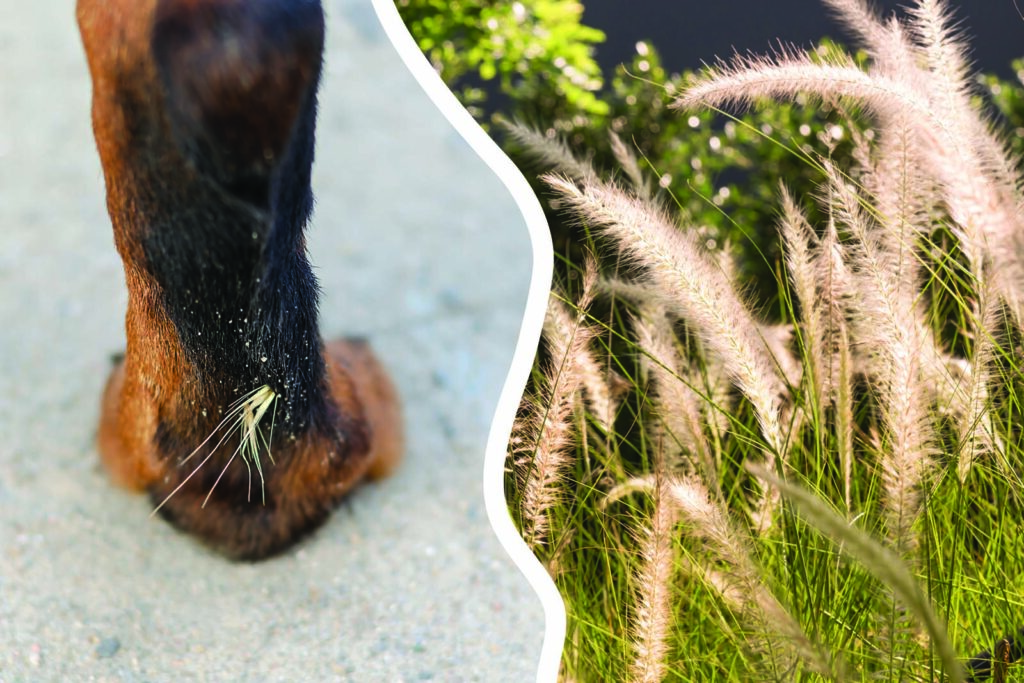As a veterinarian living in the mountains and practicing in Denver and Wheat Ridge, I love that so many of my clients share a deep appreciation for the outdoors. Whether it’s weekend hikes, dog parks, or evening walks through open space, pets here tend to live adventurous, active lives. But with those adventures comes a unique seasonal hazard that catches many pet owners by surprise: foxtails.
Foxtails are the spiky, barbed seed heads of certain grasses that flourish in dry, warm climates—like ours. By late summer, these grasses dry out and their seed heads become brittle, detaching easily and clinging to fur, socks, shoelaces, and, unfortunately, your dog’s coat. They’re small, but they can cause big problems.
The danger lies in their shape: each foxtail has a sharp point and tiny barbs that allow it to move in only one direction—forward. Once it sticks to your dog’s fur, it can work its way into the skin, ears, eyes, nose, mouth, or between the toes. And once embedded, it doesn’t stop. I’ve treated foxtails that have migrated under the skin, caused deep infections, or even made their way into the chest cavity or behind an eye.
Here are a few signs that your dog may have picked up a foxtail:
Sudden sneezing, pawing at the nose, or nosebleeds
Head shaking or ear scratching
Red, swollen eyes or frequent blinking
Limping, licking at the paws, or a swollen foot
A painful lump under the skin that seems to appear overnight
So what can you do to prevent foxtail trouble?
Avoid tall grass, especially during the dry summer months. Stick to well-maintained trails and avoid areas where wild grasses are overgrown. After each outdoor adventure, take a few minutes to give your dog a thorough check—especially in high-risk areas like between the toes, under the armpits, around the ears, and under the tail. If your dog has long hair, consider trimming the fur around the feet and ears during foxtail season to reduce risk.
If you suspect a foxtail has made its way into your dog’s skin or body, don’t try to remove it yourself unless it’s clearly visible and shallow. These seeds can break apart or move deeper during handling. Your veterinarian can use tools, sedation, or imaging if necessary to locate and safely remove them.
Colorado summers are beautiful, but foxtails are a real hazard that many pet owners don’t hear about until it’s too late. With a little awareness and a quick post-walk check, you can keep your furry friend safe and avoid an unexpected trip to the vet.
Dr. Brien Jones is a veterinarian and co-owner of Altitude Animal Aid Mobile Veterinary Services, which serves the Western suburbs of Denver and mountain communities of of the front range. Dr. Jones has special interests in senior pet wellness, preventative care, emergency care, and soft tissue surgery.






